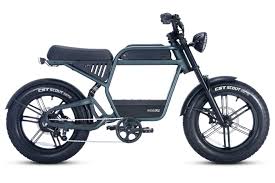
Table of Contents
ToggleIntroduction
Electric bikes, commonly known as e-bikes, are revolutionizing urban mobility. With increasing urbanization and the pressing need for sustainable transportation solutions, e-bikes offer an efficient, eco-friendly alternative to traditional modes of transportation. This article delves into the various aspects of electric bikes, including their benefits, technological advancements, and future prospects.
Benefits of Electric Bikes
Eco-Friendly Transportation
One of the most significant advantages of e-bikes is their minimal environmental impact. Unlike cars and motorcycles, e-bikes produce zero emissions, making them a green alternative that helps reduce air pollution and carbon footprints. This is crucial in combating climate change and promoting cleaner air in urban areas.
Cost-Effective
E-bikes are not only affordable to purchase compared to cars, but they also have lower maintenance costs. The operational expenses are minimal since they require less frequent servicing, and the cost of electricity for charging is significantly lower than fuel costs. This makes e-bikes a financially viable option for many commuters.
Health Benefits
While e-bikes provide motorized assistance, they still encourage physical activity. Riders can choose the level of assistance, which means they can get a workout while commuting. Regular use of e-bikes can improve cardiovascular health, reduce stress, and contribute to overall physical fitness.
Convenience and Flexibility
E-bikes offer greater flexibility in navigating through traffic and reaching destinations that might be challenging for larger vehicles. They can use bike lanes and paths, which often leads to faster travel times in congested urban areas. Additionally, e-bikes are easier to park and store, addressing the common issue of limited parking space in cities.
Technological Advancements
Battery Technology
Recent advancements in battery technology have significantly enhanced the performance and range of e-bikes. Modern lithium-ion batteries are lightweight, have a higher energy density, and offer longer lifespans. These improvements mean that e-bikes can travel longer distances on a single charge, making them more practical for daily commuting.
Motor Efficiency
E-bikes are equipped with advanced motors that provide smooth and efficient power assistance. Brushless DC motors are commonly used due to their high efficiency and reliability. These motors offer better performance with less maintenance, enhancing the overall user experience.
Smart Features
Integration of smart technology in e-bikes is becoming increasingly common. Features such as GPS navigation, smartphone connectivity, and integrated displays provide riders with real-time data on speed, battery life, and navigation. Some e-bikes also offer app-based controls, allowing users to customize their riding experience and monitor performance metrics.
Challenges and Solutions
Infrastructure Development
The widespread adoption of e-bikes is hindered by inadequate infrastructure. Many cities lack dedicated bike lanes and secure parking facilities. To address this, urban planners need to prioritize the development of bike-friendly infrastructure. This includes creating safe bike lanes, installing charging stations, and providing secure parking options.
Regulatory Framework
The regulatory landscape for e-bikes varies widely across regions, creating confusion for manufacturers and users. Standardizing regulations regarding speed limits, safety requirements, and usage guidelines is essential to ensure the safe and consistent integration of e-bikes into urban transportation systems.
Public Awareness
Despite their benefits, e-bikes are still relatively unknown to many potential users. Public awareness campaigns and educational programs can help inform people about the advantages of e-bikes and how to use them safely. Promoting the benefits of e-bikes can also encourage more people to consider them as a viable transportation option.
Future Prospects
Market Growth
The e-bike market is poised for significant growth in the coming years. Factors such as rising fuel prices, increasing environmental awareness, and advancements in technology are driving demand. The market is expected to expand as more people recognize the benefits of e-bikes and as infrastructure improvements make urban areas more bike-friendly.
Integration with Public Transportation
Integrating electric bike with existing public transportation systems can enhance the overall efficiency of urban mobility. For instance, providing e-bike rental stations at train and bus terminals can facilitate seamless, last-mile connectivity. This integration can reduce the reliance on cars and promote a multimodal transportation network.
Innovative Designs
Future e-bikes are likely to feature more innovative designs and materials, making them lighter, more durable, and aesthetically pleasing. Advances in materials science could lead to the development of e-bikes that are not only functional but also stylish, attracting a broader range of users.
Conclusion
Electric bikes represent a transformative shift in urban transportation. They offer a sustainable, cost-effective, and healthy alternative to traditional vehicles, addressing many of the challenges associated with urban mobility. As technology continues to advance and infrastructure improves, e-bikes are set to play a crucial role in the future of transportation, making cities cleaner, healthier, and more efficient.